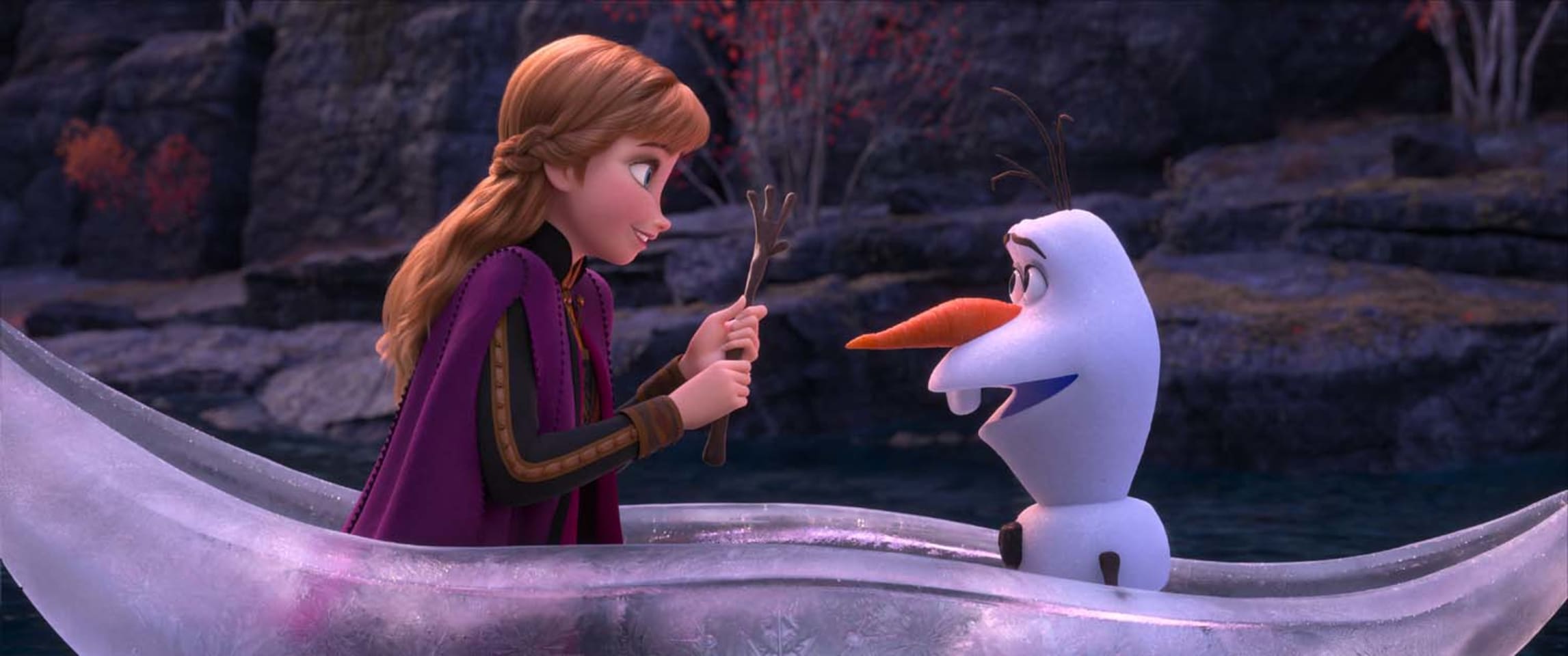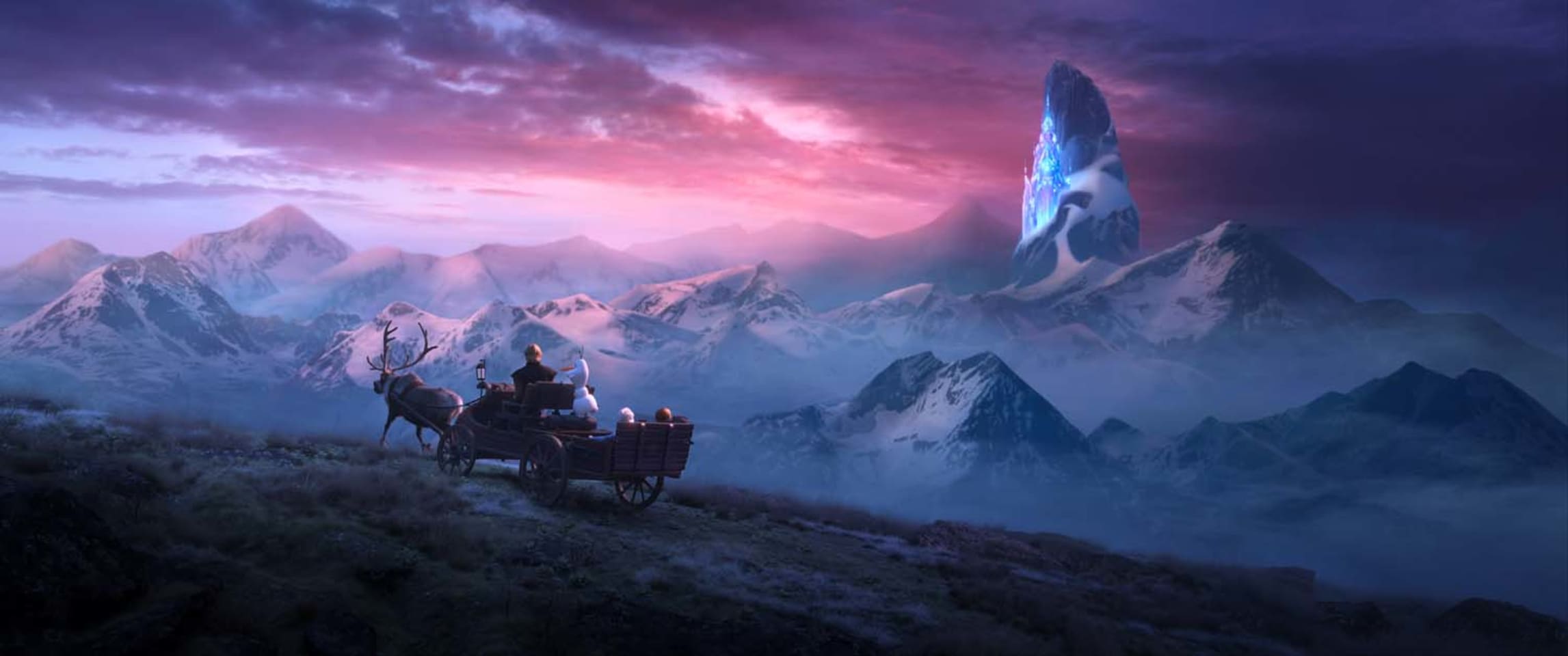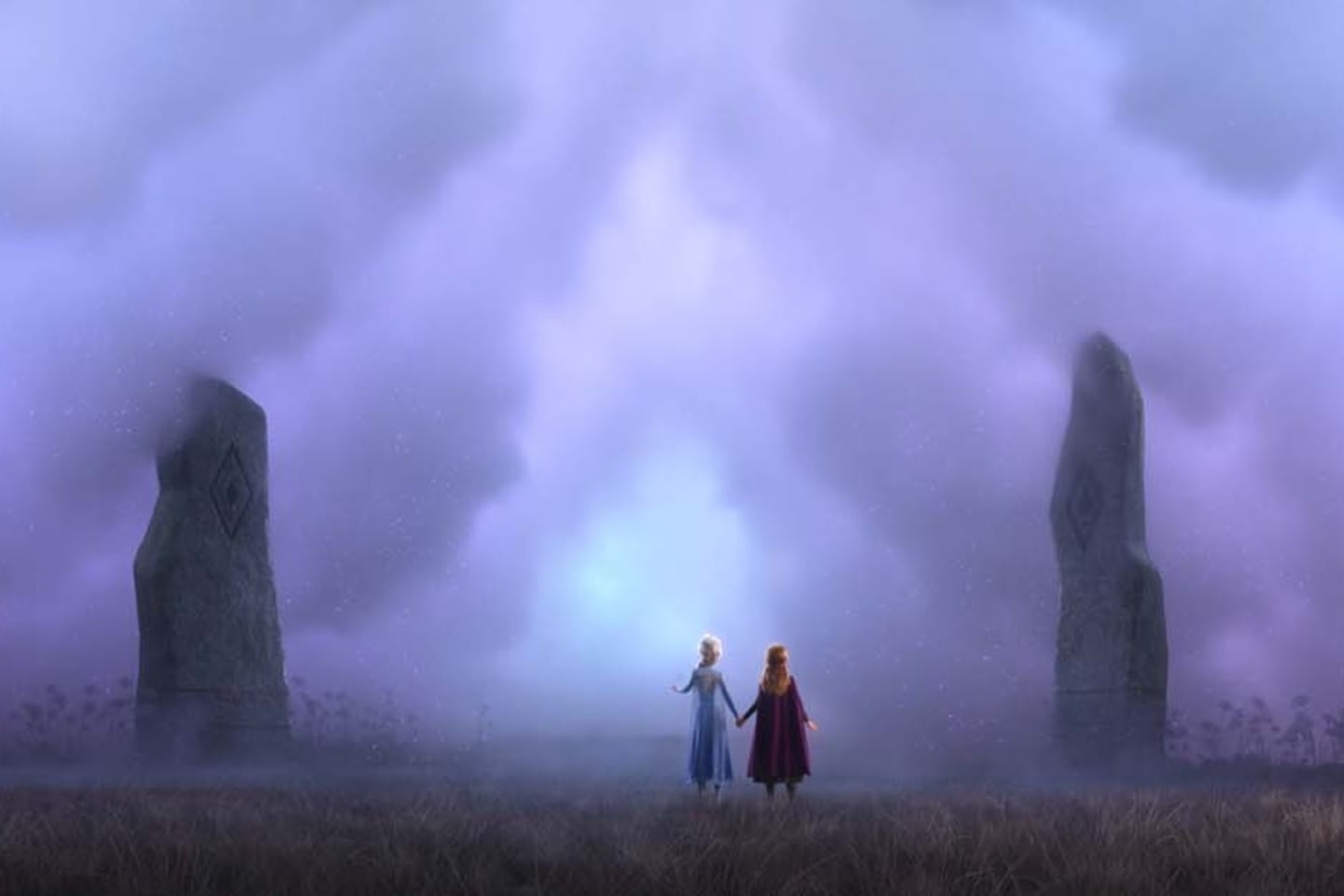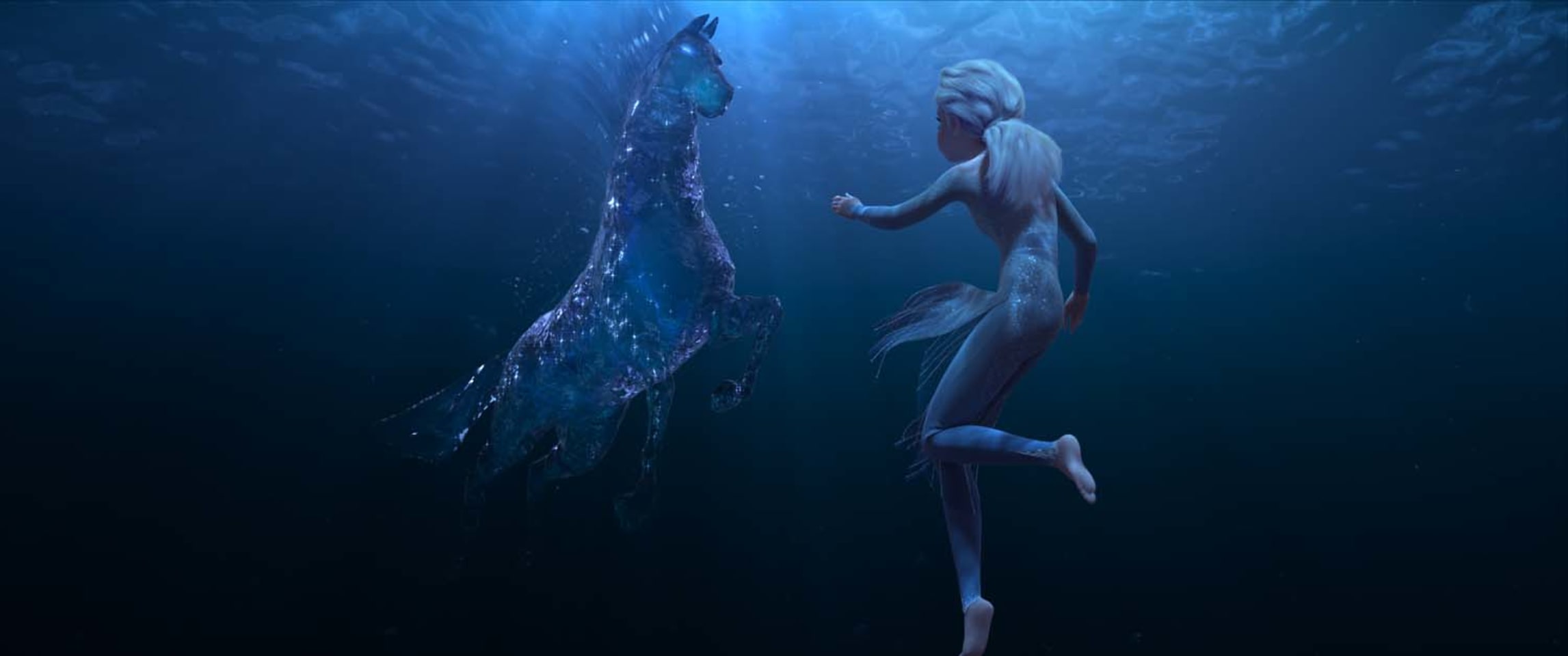A few months ago, I was lucky enough to attend an early media day for Frozen 2. Speaking to the various people involved with making the film, we learned that it was a much more collaborative process than perhaps any other animated Disney movie to date.
The animation and CG are of a higher level than anything done for an animated Disney film before, so the various departments had to work together more closely earlier than usual in the process. But it was also a challenge of story, as well. Frozen 2 is set to be much more epic and darker than the first movie. In fact, we were surprised at the scope of the second film after seeing extended footage. Elsa and Anna and their friends face challenges greater and scarier in the sequel, which dives deep into the lore of the Nordic countries.
As it turns out, the driving force behind this was simple: It all came down to fairy tales vs. myth.

Marc Smith, the director of story for Frozen 2, shared something one of the studio writers always said about the idea of what separates fairy tales from myth, and vice-versa. “Fairy tales don’t tell us that dragons don’t exist,” he said. “They say dragons do exist. Fairy tales tell us that we can slay the dragon.” To the team behind Frozen, that was their Anna, plucky and optimistic as they come. She is a fairy tale character, a princess with a trajectory and story arc that indicate she’ll triumph at the end and all will be well.
But myth? Myth is darker, explained Smith. “The mythological hero, you know, usually has to take on the weight of the world and to fulfill some sort of fate, or some sort of destiny.” Where Anna is their fairy tale princess archetype, Elsa is their mythic hero. Her story has been murkier from the start, it’s not one that necessarily points to a happy ending. Mythic heroes tend to have tragic fates; even when they save the world, they often have to sacrifice something vital in the process or make a heartbreaking decision.

During the pre-production phase of both movies, traveling to the Nordic region was essential to get a feel for the landscapes and the cultures upon which the Frozen franchise is based. It was while they were there scouting for the second movie that they realized the very landscape of the region lines up with their narrative theme of myth vs. fairy tale, said Smith:
“We traveled to Norway and Finland, and Iceland. And here on the left (they were showing us slide images at the time), that’s Lake Inari in Finland. And when we got there, the whole setting just felt like a fairy tale setting. You didn’t wonder why there’s so many stories about forest spirits and magic in those regions, and as part of those cultures. And then on the right, that’s Iceland. And Iceland really felt mythic. It felt like nature was so powerful and awesome, and it could kill you at any second. Like, just make the wrong step and it doesn’t care.”
Co-director Chris Buck agreed, explaining they started naturally envisioning each character in their own individual setting: “It was stark contrast between Norway and Iceland that framed the concept for us. Anna felt at home in Norway with its fairytale settings, but Elsa felt strangely at home in this dark, mythic Iceland.”
Hyun-Min Lee, the animation supervisor for the film, explained that the duality of character archetypes between Anna and Elsa also lent itself to a flip-flop in the second movie. “There is a little bit of a role reversal between the two,” she admitted. “In the first film, Anna was the fearless one, forging ahead – ‘I’m just going to go save my sister. Go ahead. I don’t care!’ – and this time Elsa is the one being called into the unknown. And Anna is a little bit more worried and nervous for her sister’s safety.”

Elsa has always had an air of tragedy hanging over her head from the time she was a child. Her nature, and the way her life unfolded, has made her a little more reserved, cautious, but determined. The world tends to not be kind to those with huge hearts and huge power; sometimes it asks too much of them and sometimes that power can overwhelm or corrupt. That Anna sees this around her sister is the source of her worry. Explained co-director Jennifer Lee:
“Mythic characters are magical. They carry the weight of the world on their shoulders. In fact, the mythic characters often meet a tragic fate and we realized we had two stories going together, mythic story and a fairytale story. In the mythic aspect of it, the fear of that tragic fate is something that Anna’s been worrying about and thus [trying to] protect her sister from.”
The two sisters get more of their history and backstory fleshed out in this movie, particularly in regard to their parents. Elsa is called by a disembodied voice, a spirit that urges her to leave the castle and go out into the world, one their father, the late King Angarr, warned them to be wary of. Elsa quickly learns – as mythic heroes always do – the world into which she and her family adventures isn’t necessarily kind.
That fear is confirmed when Elsa and Anna meet the trolls of the region, namely Pabbie, who warns them of a dark fate hanging over both the kingdom and Elsa herself. “The past is not what it seems,” said Lee. “Arendelle is in great danger now that Elsa herself woke the forest and the spirits. Elsa knows now that to save her kingdom she must go to that Enchanted Forest, find a way in, find that voice who’s calling her.” Yet, as Pabbie cautions Anna, the spirits of nature are angry. Elsa will be challenged every step of the way on her journey and tested.

On its surface, explained Buck, the Enchanted Forest appears like a fairy tale setting, but hides something darker. “It’s a forest ruled by the magical spirits of nature, namely of air, fire, water and earth. And just like in nature, sometimes these spirits can be enchanting and at other times they can be dangerous.” Where her powers once seemed too much, now they may not be enough to save Arendelle – or herself. “There were still a lot of questions from the first film that were unanswered.”
The biggest question of all: “Is there really such a thing as happily ever after?”
We’ll find out if fairy tale or myth wins out when Frozen 2 hits theaters on November 22nd. Get tickets here.
















